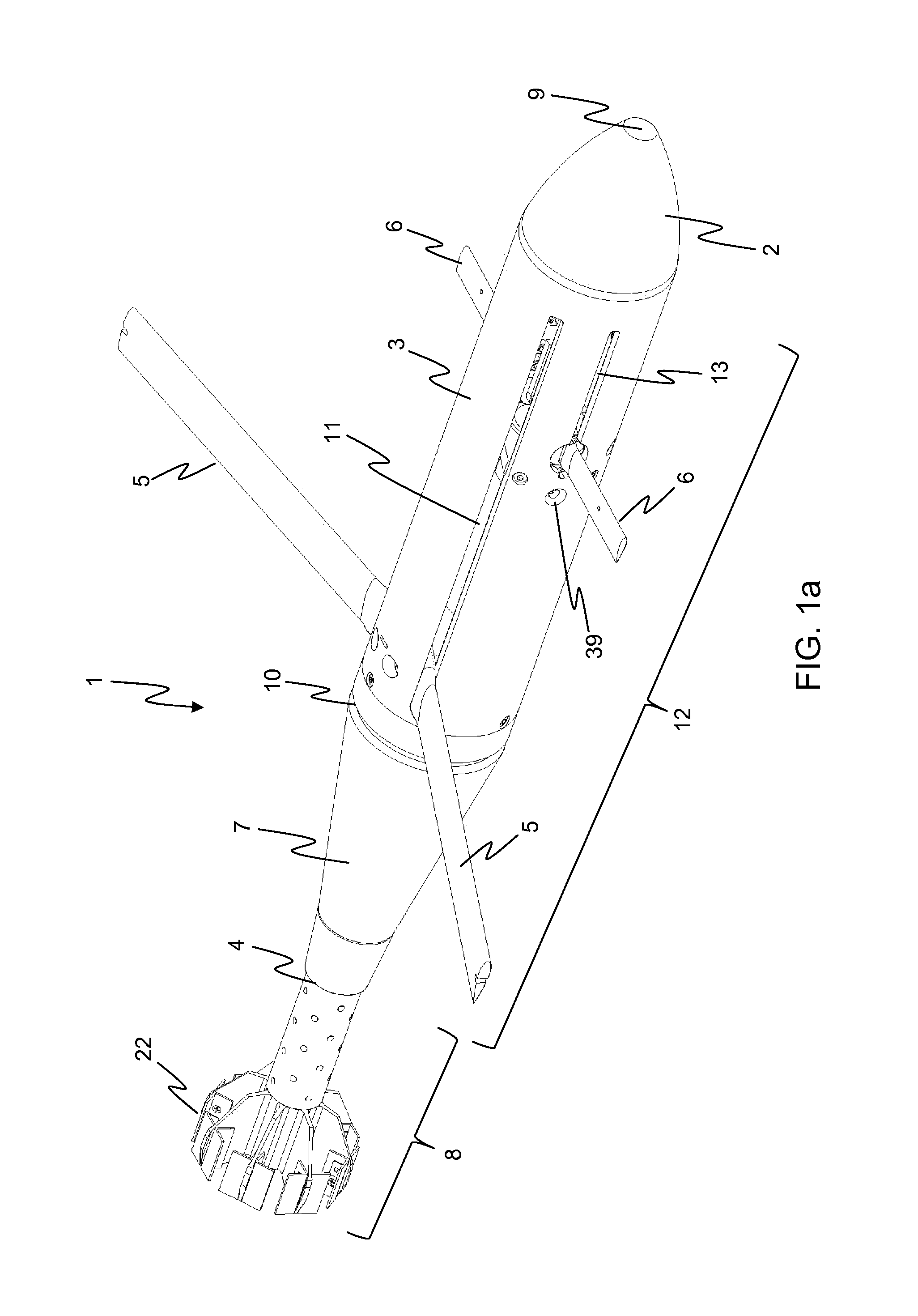Methods for extended-range, enhanced-precision gun-fired rounds using g-hardened flow control systems
a flow control system and enhanced precision technology, applied in the direction of direction controllers, weapons, ammunition projectiles, etc., can solve the problems of high-g munitions' setback load survivability, high energy consumption, and damage to each other, so as to improve precision, high firing/launch acceleration, and the effect of prolonging rang
- Summary
- Abstract
- Description
- Claims
- Application Information
AI Technical Summary
Benefits of technology
Problems solved by technology
Method used
Image
Examples
Embodiment Construction
[0043]The active canard system of some embodiments of the present invention works to extend range and precision of the round, assisting in self-righting the round and stabilizing the flight trajectory as well as providing the required actions to extend the range of the round and / or maneuvering towards the target. Some embodiments further have deployable lifting surfaces or wings placed at dihedral angles which function to self-right the round and enable it to glide stably. Then, the active canard system may focus on adjustments to extend range through a pitch up maneuver. In the event the dihedral angle does not self-right and / or does not provide stable flight, the active canards actuate in a manner to self-right and fly stably through validation and feedback from the disclosed sensor suite.
[0044]FIGS. 1a-c illustrate a 120 mm mortar round embodiment of the present invention. Although a 120 mm round is shown, a person skilled in the art would appreciate that the invention could be i...
PUM
 Login to View More
Login to View More Abstract
Description
Claims
Application Information
 Login to View More
Login to View More - R&D
- Intellectual Property
- Life Sciences
- Materials
- Tech Scout
- Unparalleled Data Quality
- Higher Quality Content
- 60% Fewer Hallucinations
Browse by: Latest US Patents, China's latest patents, Technical Efficacy Thesaurus, Application Domain, Technology Topic, Popular Technical Reports.
© 2025 PatSnap. All rights reserved.Legal|Privacy policy|Modern Slavery Act Transparency Statement|Sitemap|About US| Contact US: help@patsnap.com



